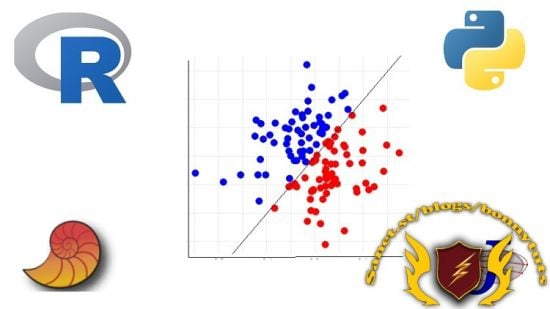
Published 6/2024
Created by Olalekan Agbolade
MP4 | Video: h264, 1280×720 | Audio: AAC, 44.1 KHz, 2 Ch
Genre: eLearning | Language: English | Duration: 20 Lectures ( 4h 29m ) | Size: 2.34 GB
Application of Morphometrics and Machine Learning to Genetic Syndrome Classification Using Anatomical Facial Points
What you’ll learn:
Understanding the basics of genetic disorders
Automating facial landmarking process
Extracting facial regions for features
Data Collection and Preprocessing
Morphometric Analysis of shape variation
Feature Extraction through PCA
Machine Learning for Classification
Validation and Testing
Performing Statistical Testing
Results presentation and interpretation
Requirements:
Basic research knowledge at college level.
Programming skill (preferably in Python and R) is recommended but not mandatory. The course provides all necessary background information and resources to help you get up to speed.
Description:
Welcome to the comprehensive course on “Genetic Disease Classification Using Morphometrics and Machine Learning”! This unique course is designed to equip you with the cutting-edge skills and knowledge needed to classify genetic diseases using advanced morphometric techniques and machine learning algorithms.In the rapidly evolving field of genetic research, the ability to accurately classify neuro-developmental disorders such as Fragile X Syndrome (FXS) and Williams Beuren Syndrome (WBS) is crucial. These conditions not only impact the lives of those affected but also present significant challenges for healthcare providers and researchers. Traditional diagnostic methods often rely on subjective assessments, which can lead to misdiagnosis and delayed treatment. This course addresses this gap by leveraging the power of morphometrics and machine learning to provide more objective, reliable, and efficient classification methods.Why This Course is Important and Relevant:Revolutionizing Diagnostics: The integration of morphometrics and machine learning represents a revolutionary approach in the diagnosis and classification of genetic diseases. By using anatomical facial points and sophisticated algorithms, this method offers unparalleled accuracy and speed, transforming how we understand and identify these conditions.Broader Applications: While the course focuses on FXS and WBS, the techniques and skills you will learn are applicable to a wide range of genetic and non-genetic conditions. This includes applications in sexual dimorphism, face recognition, age estimation, and beyond. The versatility of these methods makes this course invaluable for professionals in various fields such as genetics, bioinformatics, and medical imaging.Cutting-Edge Tools and Techniques: You will gain hands-on experience with state-of-the-art tools and software used in the industry, including Python for automatic anatomical facial landmarks extraction, R, MorphoJ and PAST for General Procrustes Analysis (GPA) and Principal Component Analysis (PCA), Shape variability and machine learning algorithms like Support Vector Machines (SVM), Random Forest (RF), and Artificial Neural Networks (ANN).Comprehensive Learning Path: This course is meticulously structured to cover all essential aspects of morphometrics and machine learning. From the selection of anatomical facial points to the interpretation of complex results, each module builds on the previous one, ensuring a thorough and cohesive learning experience.Research and Practical Insights: Beyond theoretical knowledge, you will delve into practical applications and real-world case studies. The bonus section on research articles will provide you with contemporary insights and advancements in the field, keeping you abreast of the latest developments.Content OverviewIntro to Morphometrics and Machine Learning: Understand the foundational principles of morphometrics and machine learning, and their significance in genetic disease classification.Anatomical Facial Points Selection: Learn the criteria and techniques for selecting key anatomical facial points crucial for accurate analysis.Automatic Anatomical Facial Landmarks Extraction (Python): Master the use of Python for automated extraction of facial landmarks, streamlining the data collection process.General Procrustes Analysis and PCA (R and PAST): Perform GPA and PCA using R and PAST to analyze shape data and reduce dimensionality.ML Classification with SVM, RF, and ANN: Implement machine learning classifiers such as SVM, Random Forest, and Artificial Neural Networks to categorize genetic diseases based on morphometric data.Statistical Tests with T-test, ANOVA and ANOSIM: Conduct tests to determine the statistical significance of your findings and ensure robust analysis.Shape Variability Analysis (MorphoJ): Utilize MorphoJ for detailed analysis of shape variability among different genetic conditions.Anthropometric Distance Measurement: Measure and analyze anthropometric distances to support your classification models.Results and Interpretations on Performance Metrics: Interpret the performance metrics of your machine learning models to evaluate their effectiveness.Results and Interpretations on ANOVA Test: Understand the implications of your ANOVA test results in the context of genetic disease classification.Results and Interpretations on Anthropometric Distance Measurement: Analyze and interpret the significance of anthropometric distance measurements in your studies.Results and Interpretations on PCA and Shape Variability: Delve into the results of PCA and shape variability analyses to uncover deeper insights.Extra: Research Articles Expository: Access a curated collection of research articles to stay updated with the latest advancements and applications in the field.By the end of this course, you will be equipped with a powerful toolkit combining morphometric techniques and machine learning, enabling you to contribute to the early diagnosis and classification of genetic diseases like FXS and WBS. Join us on this exciting journey to bridge the gap between technology and genetic research, and make a meaningful impact in the field of neuro-developmental disorder diagnosis and management.
Password/解压密码www.tbtos.com
转载请注明:0daytown » Genetic Disease Classification Using Facial Landmarks